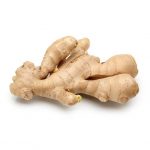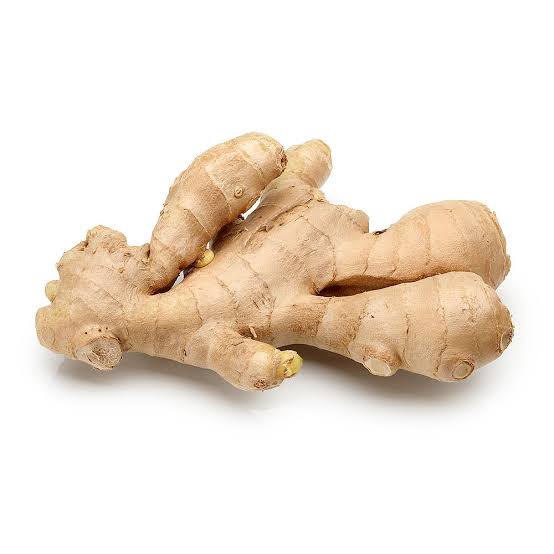Ginger or Chitta (Hausa) or Imbir (Polish)
Ginger, which is the underground stem or rhizome of the plant Zingiber officinale Roscoe, remains an important cooking spice around the world.
Originating in Asia, ginger is widely used in Asian and Indian cuisine, as well as in West Africa, including Nigeria and the Caribbean.
Many investigations have recently reported the health effects of ginger. It plays and important role in the prevention and management of gastrointestinal disorders, including nausea and vomiting.
Next time you have the queasy feeling (seasickness) in the pit of your tummy, instead of dashing out to the local pharmacy, you might want to try ginger root, found in most local markets in developing countries and supermarkets in either fresh, pickled or as dried powder.
While ginger is thought to have several important health properties – including analgesic, sedative, antipyretic and antibacterial – numerous studies have confirmed its effectiveness in easing nausea caused by chemotherapy, seasickness and morning sickness, as well as other stomach ailments, such as diarrhoea.
In one of the most recent ginger studies in cancer patients undergoing chemotherapy, it was found that patients given small amounts of ginger reported 40 per cent less nausea and vomiting. Ginger, which has antispasmodic and anti-inflammatory properties, has three main active components: gingerols, zingerone, and shogaols. The exact mechanism by which ginger eases nausea is not known.
However, it is speculated that it is a combination of motility effects and anti-inflammatory activity on the gut, as well as acting as a neurotransmitter receptor antagonist.
Ginger has been used for many years in healthy people to treat nausea, indigestion, and joint pain.
It can be used prophylactically (as a preventive measure) in healthy people who know they will experience nausea or are experiencing nausea. Because of its pungent taste and interesting aroma, it has been used since the ancient times as a spice.
In addition, ginger has been used historically for its medicinal value in a wide variety of diseases, especially in gastrointestinal disorders, such as constipation, diarrhea, anorexia, colic, dyspepsia, nausea, vomiting, and motion sickness.
Some of the medicinal features of ginger include, anti-inflammatory properties, anti-thrombotic properties, cholesterol-lowering properties, blood pressure-lowering properties, antimicrobial properties, antioxidant properties, antitumor properties, hypoglycemic properties.
Because of these properties listed above, it is no wonder that some studies have linked the consumption of ginger with beneficial effects in: a) heart disease b) cancer c) hypertension d) obesity e) diabetes f) osteoarthritis g) bacterial infections.
A study looked at the effects of ginger consumption on blood lipids, blood sugar, and platelet aggregation in patients with coronary heart disease (CHD) – one of the heart diseases.
Given the patients low dose (4 g/day) of it for 3 months did not confer any benefits.
However, when the patients were given a single large dose (10 g) of ginger, there were significant reductions in platelet aggregation (reduction of the formation of clot in blood lining and vessels), indicating that large doses are necessary for the greatest benefit. Ginger’s effectiveness for reducing blood pressure (BP) was assessed under varied dosages.
A dose-dependent (0.3-3 mg/kg) decrease was noted in blood pressure (BP), which provides support for ginger’s role in BP regulation and also indicates that the more ginger is ingested by patients with BP, the lower will be their BP.
It has been shown to possess anti-diabetic activity in a variety of animal studies. A study found that when laboratory animals are given ginger juice for 6 weeks, the risk for developing diabetes is reduced.
The researchers have found that treatment with ginger significantly increases insulin levels and decreases fasting glucose levels. Treatment with ginger also produces other favorable effects in diabetic laboratory animals, including decreases in serum cholesterol, triglycerides, and blood pressure.
Aldose reductase is an enzyme that plays a very minor role in healthy humans. However, this is not the case in diabetics. In fact, it is the abnormal metabolic results of this enzyme believed to be responsible for many diabetic complications, particularly eye damage.
Because ginger has been found to have at least 5 components which work as aldose reductase inhibitors, it is believed to be play an important role in the prevention of diabetes complications.
A tumor or cancer cell requires new blood vessel development in a process known as angiogenesis. The most important factor associated with induction and maintenance of the new vasculature in human tumors is a component called the vascular endothelial growth factor (VEGF).
If a component is tumor preventive, we would expect it to suppress or stop VEGF and prevent new vessel formation. Results of many scientific studies have demonstrated that gingerol does inhibit angiogenesis and may be useful in the treatment of cancer and other angiogenesis-dependent diseases.
There was a stronger effect on the arthritic cells from ginger root extract than on the normal cells. Ginger has been used in eastern medicine for the treatment of gastrointestinal ailments.
The combined treatment of antibiotics and ginger were tested for the control and treatment of Helicobacter pylori infections. The treatment was effective and was shown to inhibit H. pylori with synergistic or additive activity.

Credit: Planetorganic
These are the thoughts of:
Sa’eed Halilu Bawa
Senior Lecturer (Associate Professor) at University of the West Indies, St. Augustine Campus, Trinidad.
Studied Food and Nutrition Sciences, Dietetics at Kaduna Polytechnic, Nigeria; Warsaw University of Life Sciences, Poland.
























